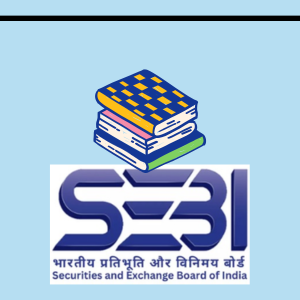
In the last decade, one of the major milestones in technological advancements has been the invention and development of drone technology.
Needless to say, a complicated piece of machinery such as a drone has both its pros as well as cons. In this article, Team YLCC aims to highlights the upsides of using this technology as well as its drawbacks. Read on!
Pros Of Drone Technology
Drone technology can be used for a plethora of purposes, across a number of sectors. If used correctly, drones can significantly reduce burden on physical labour. Given below are some of the primary benefits of using drone technology:
- DRONES ASSIST IN DELIVERY
Due to the simple fact that drones are airborne, they will not encounter any traffic and will be greatly beneficial in carrying out any kinds of delivery that is within the drone’s payload capacity. Especially, in big cities with high fuel prices, drones can be extremely useful for courier companies to deliver parcels to customers. This could lead to fewer vehicles on the streets. Needless to say, drones will play an important role in facilitating the logistics industry in the upcoming future.
- DRONES HAVE THE POTENTIAL TO HELP WITH DANGEROUS TASKS
Drones possess the technology to assist us with various tasks that could be dangerous or risky for human workers. For example, instead of deploying people into uncharted territory, drones can be sent there first for a proper visual since they can be remote-controlled from miles away.
- DRONES ASSIST IN AGRICULTURE
Another major upside of using drone technology is that it has a significant utility in the agricultural sector.
In fact, drones can greatly improve the efficiency of processes in agriculture since far less manual work would be needed if drones were used on a large scale. For example, drones may be used for irrigation of fields, application of pesticides herbicides or fertilisers, etc.
- DRONES ARE USEFUL FOR CLOUD SEEDING
What is cloud seeding? Cloud seeding is a type of weather modification that aims to change the amount or type of precipitation that falls from clouds by dispersing substances into the air that serve as cloud condensation or ice nuclei, which alter the microphysical processes within the cloud.
The conventional practice of cloud seeding requires aeroplanes- with the advent of powerful drones, this practice may now be deemed redundant as drones make cloud seeding a relatively easily and effective process.
- PHOTOGRAPHY AND MAPPING
Many people use drones to take pictures from an elevated position. However, one area of significant advancement includes the use of photogrammetry, which is a way to use triangulate geometry through similar images to create 2-D and 3-D maps of a particular area.
According to the American Society for Photogrammetry and Remote Sensing (ASPRS), photogrammetry is “the art, science, and technology of obtaining reliable information about physical objects and the environment, through processes of recording, measuring, and interpreting imagery and digital representations of energy patterns derived from non-contact sensor systems.”
- DRONES ARE CHEAPER THAN HELICOPTERS OR PLANES
The use of drones can also make sense from a financial perspective. In fact, drones are much cheaper compared to helicopters and planes and when it comes to operations that do not require carrying heavy weight, drones could replace planes or helicopters and save us plenty of resources and money.
- NO LICENSE REQUIRED
Another major advantage of drones is that you do not require a driver’s license for drones in many countries of our planet. In fact, in many countries, you can just order your drone and you are ready to go.
- DRONES ARE IMMENSELY SUCCESSFUL IN SURVEILLANCE
In the areas of surveillance and reconnaissance, drones need to be less detectable to avoid their destruction by an enemy force. Work is in progress to develop a drone that is smaller and faster than current drones. According to The Defense Post, the South Korean military has purchased low-noise hydrogen drones that use technologies such as an improved “aerial structure design” and “flight control algorithms.” Other advancements to make drones smaller include creating tailless drones and using a polymer-based material to avoid detection by radar.
- 24X7 FUNCTIONING
Another upside of the use of drones is that drones are available 24/7. In contrast to humans, drones will have no real limit to operation times and can be used whenever they are needed. Hence, drones can also be much more reliable and productive than humans and will therefore become an important alternative to operations where humans have to be present.
Cons Of Drone Technology
Although drone technology has its uses, caution is also warranted while using the same. In its current state, there are a number of issues with using drones which we must overcome in the time ahead. Given below are some of the important drawbacks that are associated with drones:
- ENVIRONMENTAL RESTRICTIONS
Heat, wind and precipitation can halt a drone’s flight at a moment’s notice. In addition, geographic barriers such as buildings, trees, power lines and airports limit the space in which a drone can operate.
- MISUSE OF DRONES
Drones can be misused to stalk, vandalize homes and for doing many other anti-social activities. There have been many incidents, where drones posed security threats.
- SUSCEPTIBLE TO ATTACKS FROM THE WILDLIFE
When flying drones to an area that has a large concentration of wild animals, the device is often considered creatures. Larger flying animals such as eagles are usually the main culprit when as they usually attack or capture drones while navigating the atmosphere and taking important photos or videos. Video bloggers will already know when their drones suddenly disappear. Vloggers will eventually find out that their drones appear in the nest of eagles or any flying creature that took the drone while flying across the atmosphere.
- SUSCEPTIBLE TO HACKING
Hackers can easily invade the main control system of the drones, replacing the original users as the new drivers or controllers of the device. The network and control systems of drones contain vital information that is essential for hackers to sneak without the knowledge of the original user. After obtaining private information, hacker starts to corrupt the file to prevent any traces of intrusion. When users attach their social media profile directly to the control systems of the drone, all confidential information becomes vulnerable, allowing unauthorized third parties to sneak confidential files.
- LACK OF REGULATORY FRAMEWORK
There is also an issue with the rules and regulations related to drone use. In fact, in many countries all over the world, there are still no proper regulations in place that would set a framework for drone use in the private as well as in the commercial sector. In turn, people may not be aware of the many dangers related to drone use and may also be insecure regarding what they are allowed to do and what is prohibited.
- INSURANCE-RELATED ISSUES
Drones can also be problematic from an insurance perspective. In fact, many insurance companies will refuse to pay in case of drone accidents and many insurance policies also don’t include any information regarding drone use at all. Thus, operating drones can lead to serious financial issues since you will often be personally liable in case of accidents.
- TERRITORIAL RESTRICTIONS
Many countries also prohibit drone use in certain areas. For instance, if you live near an airport, you will often not be allowed to use your drone since it could be a potential danger to planes.
- DRONES ARE EXPENSIVE
Drones are expensive because of the technology, hardware, and software needed to operate them safely. The human resources required to develop a drone are similar to some aeronautic companies: electrical and mechanical engineers, fluid dynamics engineers, software developers, industrial designers, manufacturing, R&D team, and video and photo experts are often all necessary. The R&D costs of an advanced drone company like DJI, Autel, Skydio or XDynamics are staggering.
YLCC would like to thank the Content Team for their valuable insights in this article. In a subsequent article, we plan to offer an overview of Drone Law in India.






